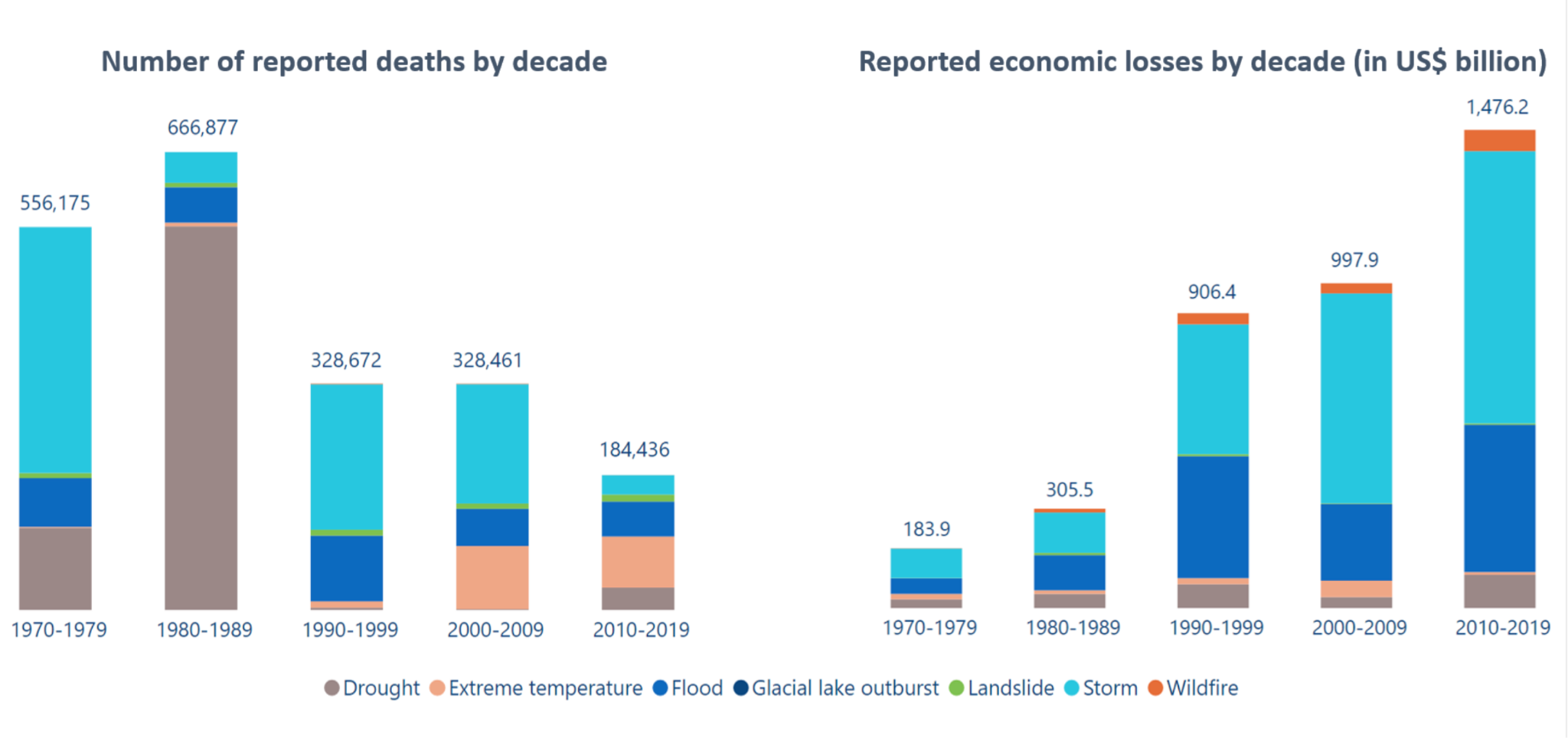Fact Check: The Impact of Fossil Fuels on Climate-Related Deaths
Half True
Vivek Ramaswamy, a U.S. presidential candidate for the Republican Party, tweeted that climate disaster death rates have declined by 98% over the last century, but his claim that the average person is 50 times less likely to die of a climate-related cause than in 1920 is mathematically incorrect, as it's approximately 32 times less likely; furthermore, fossil fuel-related deaths have been higher than previously thought, accounting for 18% of global deaths in 2018, though fossil fuel consumption does help grow the economy.
Vivek Ramaswamy, a U.S. presidential candidate for the Republican Party, recently tweeted that “the climate disaster death rate has declined by 98% over the last century, even as carbon emissions have risen. The average person is 50x times less likely to die of a climate-related cause than in 1920. Why? Fossil fuels. An inconvenient truth for the climate cult.”
Ramaswamy’s July 9 tweet came from his episode on Upstream, a political podcast, where he spoke about his 2024 Republican presidential campaign, his viewpoints on Silicon Valley, and depoliticizing corporations, among other topics. While Ramaswamy does not deny that climate change does have environmental impacts, he said that a warming world is “not entirely bad” and that “people should be proud to live a high-carbon lifestyle.”
Ramaswamy’s claim that climate-related deaths have declined by 98 percent is true, according to research from the International Disaster Database. According to research from Danish environmentalist Bjorn Lomborg, climate-related deaths in the 1920s were about 485,000 a year, dropping drastically to 18,362 deaths between 2010 and 2019. That rate further dropped to 14,893 in 2020 and 5,569 in 2021. Climate-related deaths are categorized as deaths resulting from floods, storms, droughts, wildfires, and extreme temperatures.
Another way to look at this would be to understand the statistics adjusted for the change in population over the past century. In 1920, there were approximately 255.3 deaths per million people, whereas, in 2020, there were 1.9 deaths per million people, which amounts to a 99.25 percent decrease.
The World Meteorological Organization has acknowledged that while the number of disasters has increased over the past 50 years owing to climate change, more extreme weather, and improved reporting on disasters, the number of deaths has significantly decreased thanks to early warning systems and better disaster management.
However, the claim that “the average person is 50x less likely to die of a climate-related cause than in 1920” is mathematically incorrect. Based on the International Disaster Database numbers, the average person is approximately 32x times less likely to die of a climate-related cause than in 1920.
Further, deaths from fossil fuel emissions have been significantly higher than previously thought, according to research from Harvard University, in collaboration with the University of Birmingham, the University of Leicester, and University College London. Fossil fuel-related deaths accounted for 18 percent of global deaths in 2018, affecting approximately 1 in 5 people, according to the research published in February 2021.
Ramaswamy also asserted that using more fossil fuels would grow the economy and help pay for climate change mitigation. It is true that fossil fuel consumption helps grow the economy. According to information from the Department of Energy, the oil and gas industry was responsible for 12.3 million American jobs in 2020. Further, the affordability of oil and gas in the U.S. is “infusing hundreds of billions of dollars into new American manufacturing, supporting the development of new jobs, infrastructure, and economic opportunity in communities throughout the country.” Additionally, the Department of Energy estimates that the oil and gas industry is projected to provide $1.6 trillion in federal and state tax revenue between 2012 and 2023, supporting the maintenance of public infrastructure across the country.
Ramaswamy’s claim stands true to various degrees when broken into segments. It is true that climate-related deaths have declined 98 percent since 1920. However, the average person is 32x less likely to die of a climate-related cause, not 50x. Further, fossil fuel-related deaths are significantly higher than previously thought, although it is true that fossil fuel use grows the economy. Thus, it is true that climate-related deaths have decreased tremendously over the past century, but it is difficult to pinpoint the deaths due to the use of fossil fuels.
Got false information you want to share with us or something to fact-check?
References and Further Reading
Gale Pooley. Human Progress. The Collapse of Climate-Related Deaths. 03 September 2021.
Bjorn Lomborg. Science Direct. Welfare in the 21st century: Increasing development, reducing inequality, the impact of climate change, and the cost of climate policies. July 2020.
World Meteorological Organization. Weather-related disasters increase over past 50 years, causing more damage but fewer deaths. 31 August 2021.
World Meteorological Organization. Economic costs of weather-related disasters soars but early warnings save lives. 22 May 2023.
Sheelah Kolhatkar. The New Yorker. The C.E.O. of Anti-Woke, Inc. 12 December 2022.
Steven Mufson. The Washington Post. He wrote the book on crushing ‘wokeism.’ Now he’s running for president. 3 April 2023.




